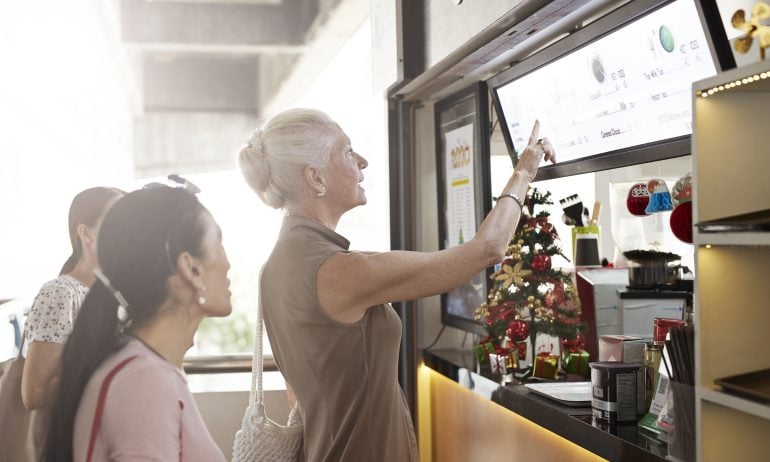Dynamic Pricing: What It Is And Where Consumers Run Into It
Companies can automatically change prices depending on factors like supply, demand and competitor pricing.

Many, or all, of the products featured on this page are from our advertising partners who compensate us when you take certain actions on our website or click to take an action on their website. However, this does not influence our evaluations. Our opinions are our own. Here is a list of our partners and here's how we make money.
Dynamic pricing is a strategy used by retailers and service providers to automatically raise or lower prices. Companies who use dynamic pricing rely on technology, including artificial intelligence, to shift prices up or down based on market factors like how much of the product or service is available, customer demand or competitor pricing.
For example, prices might increase automatically when demand is high and supply can’t keep up — a practice that’s become known as surge pricing. But dynamic pricing can also mean prices go down at a time when demand is low or there’s a surplus of the product.
The concept behind dynamic pricing isn’t new. Movie tickets are cheaper during the day and restaurants host happy hours before the dinner rush because it gets people in the door during a typical slow period. But advances in technology have made it possible to change prices automatically based on real-time data. That makes dynamic pricing appealing to businesses because it’s not only faster, but also more efficient, since algorithms process the information and determine the optimal price.
Where consumers encounter dynamic pricing
Dynamic pricing is increasingly common in a variety of industries and settings. In a recent NerdWallet survey, many consumers reported being resistant to the concept.
Airlines are considered early adopters of dynamic pricing, which they embraced as they overhauled their pricing models in the 1980s when the industry was deregulated. Airlines optimize ticket sales by changing prices based on how far in advance travelers book their seat, demand for the destination, time of departure, seat selection and other factors. The strategy later spread throughout the travel and hospitality industries.
Online retailers also use dynamic pricing technology to adjust the cost of goods as the market for them shifts. Amazon is known for raising or lowering prices multiple times a day based on availability, demand, competition and other factors. Walmart and Target also use dynamic pricing for goods sold online. The debut of digital price tags at brick-and-mortar stores like Walmart has caused many to worry in-person prices will become unpredictable, as well. But, so far, the retail giant says it won’t use dynamic pricing in its stores.
News moves fast. Stay ahead of how it could impact your money.
Interest rates, inflation, natural disasters — get notified when breaking news could affect your finances, and get expert insights to help you plan your next move.

Fast-food restaurants including McDonald’s, Burger King, Starbucks and others are brick-and-mortar examples of dynamic pricing in action. (Wendy’s could join their ranks in 2025.) They rely on common low-tech tactics, like offering deals on food and drinks during slow parts of the day. But they’re also leveraging customers’ love of online ordering by offering perks (and even lower prices) through their apps.
App-based services like Uber, DoorDash and InstaCart are open about their use of surge pricing, which is a form of dynamic pricing. When demand for service is high at a particular time or in a specific location, customers see higher-than-usual prices.
Dynamic pricing can work in your favor
One upside of dynamic pricing is that, to a point, companies can be just as driven to lower prices as they are to raise them, because discounts tend to increase demand and, consequently, sales. This principle has become obvious this year as more businesses see consumers pulling back on spending because everything is so expensive.
To bring up sales, companies are calling attention to lower prices, whether it's grocery stores marketing seasonal discounts, fast-food chains rolling out cheaper menu options, like McDonald’s value meal, or big retailers fighting for your Black Friday dollars.
So, as dynamic pricing becomes more ubiquitous, consumers could start finding deals left and right if they’re willing to wait for them. With browser extensions like Honey or the Camelizer, which track prices and find coupons, bargain-hunters can be sure they’re buying at the lowest price.
At the same time, when companies raise prices during a period of high demand, it can mean people who are willing to pay a premium face less competition for a limited supply of goods. So if you really, really want tickets for a Taylor Swift concert, and you’re willing to pay more for them than other people, you can do that.
But it can also feel unfair
There’s a difference between getting priced out of something you want — like tickets to see your favorite pop star — and something you need. That’s why companies face criticism (and sometimes legal trouble) when they raise prices on essential goods and services during an emergency, a practice known as price gouging.
There also can be a lack of transparency in dynamic pricing. As more and more companies adopt the strategy, they’re fluctuating prices for goods and services that consumers expect to be fixed. So, it’s not always clear to customers when or why they’re paying higher prices and how they could avoid doing so.
And there’s another degree of opaqueness that’s more worrying. Companies are gathering tons of personal information on their customers every day, which they can leverage to set prices at an individual level. The Federal Trade Commission calls this “surveillance pricing,” and has raised concerns about how it could lead to consumers unwittingly paying more.
The FTC has opened an inquiry into how companies use a person’s data — such as location, demographics, credit history and browsing or shopping history — to set prices. In July, the commission sent orders to eight companies that offer pricing products and services to businesses, calling for information on what data is collected, how it’s used and what impact that could have on prices.
The eight companies include Mastercard, Revionics, Bloomreach, JPMorgan Chase, Task Software, PROS, Accenture, and McKinsey & Co.

